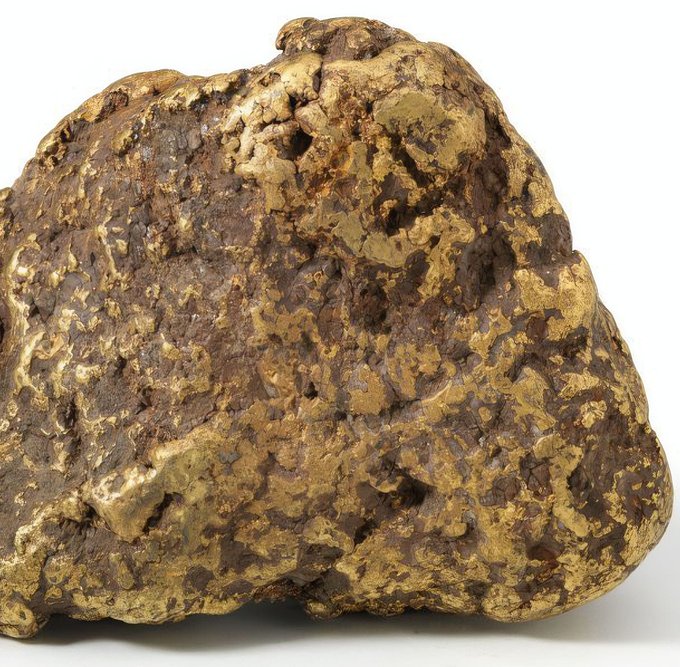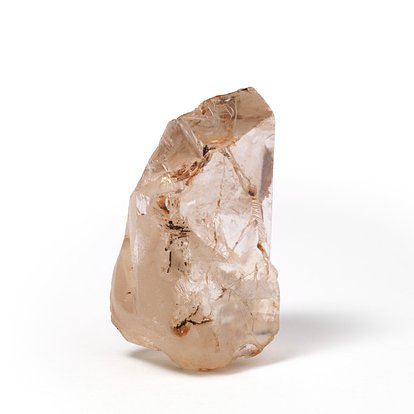Since their arrival in Brazil in 1500, the Portuguese went in search of gold and precious stones, though they would not find the massive gold deposits until almost two centuries later, by the end of the 1600s, in the region later dubbed Minas Gerais ("General Mines"). The gold rush brought countless explorers and adventurers to the region who, by looking at the ground, soon found the coveted diamonds in the first quarter of the 18th century and in vast and unprecedented quantities. This is the discovery that accounts for the paradigm shift in jewellery, which would be defined, henceforth, not by precious metals, but by gemstones, thus lending gem-setters a unique prominence.

Gold and Diamonds from Brazil
Introduction

Gold nugget
Brazil, Goiás (?), 18th century (2nd half)
Gold clustered with quartz and iron oxides
The story goes that, in the second half of the 18th century at Arraial de Água Quente, in Goiás, a large nugget was found of such weight that, given its rarity, it was sent to Ajuda, in Lisbon. Also locally known as “torrão” (lump), perhaps due to its colour and texture, this rare nugget, which eluded the Napoleonic invasions, was exhibited in 1876 in a ball in Ajuda Palace by initiative of D. Luís I.
PNA, inv. 4890
©DGPC/ADF Luísa Oliveira
Gold clustered with quartz and iron oxides
The story goes that, in the second half of the 18th century at Arraial de Água Quente, in Goiás, a large nugget was found of such weight that, given its rarity, it was sent to Ajuda, in Lisbon. Also locally known as “torrão” (lump), perhaps due to its colour and texture, this rare nugget, which eluded the Napoleonic invasions, was exhibited in 1876 in a ball in Ajuda Palace by initiative of D. Luís I.
PNA, inv. 4890
©DGPC/ADF Luísa Oliveira

Rough diamond
Brazil, Minas Gerais, late 18th century
Diamond
This specimen is a fragment of a much larger diamond that is thought to have been composed of yet another fragment that is mentioned historically throughout the 18th and 19th centuries as a 135 carat gem and which was weighed in 1911 for the old royal palaces' Inventory as a 27.7 g (138.5 carats) stone. The brownish hue is due to superficial ferrous impurities that constitute evidence of the geological sedimentary context in which it was found. This diamond is potentially colourless.
PNA, inv. 4876
©DGPC/ADF Luísa Oliveira
Diamond
This specimen is a fragment of a much larger diamond that is thought to have been composed of yet another fragment that is mentioned historically throughout the 18th and 19th centuries as a 135 carat gem and which was weighed in 1911 for the old royal palaces' Inventory as a 27.7 g (138.5 carats) stone. The brownish hue is due to superficial ferrous impurities that constitute evidence of the geological sedimentary context in which it was found. This diamond is potentially colourless.
PNA, inv. 4876
©DGPC/ADF Luísa Oliveira
1 / 2
